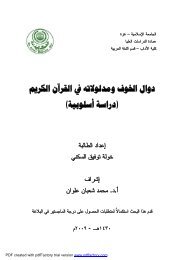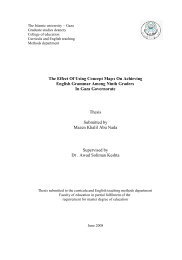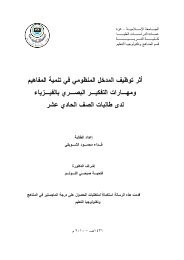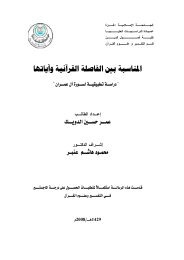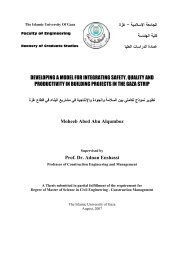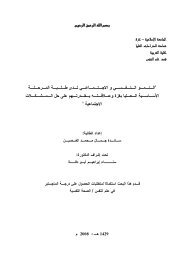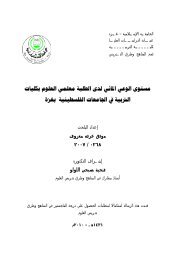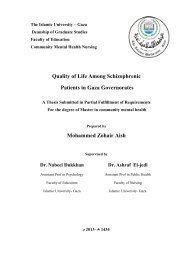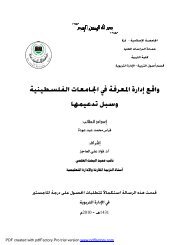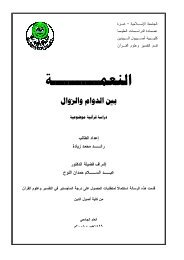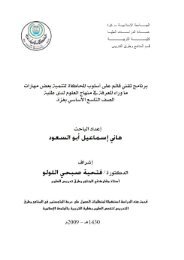A Study of Lean Construction Practices in Gaza Strip
A Study of Lean Construction Practices in Gaza Strip
A Study of Lean Construction Practices in Gaza Strip
Create successful ePaper yourself
Turn your PDF publications into a flip-book with our unique Google optimized e-Paper software.
1.1 Statement <strong>of</strong> the Problem<br />
Most <strong>of</strong> the construction projects <strong>in</strong> the <strong>Gaza</strong> <strong>Strip</strong> are characterized by <strong>in</strong>efficiencies,<br />
large variability and low performance and thus wast<strong>in</strong>g time, money and other resources<br />
(Said, 2006). In this thesis, we will show the expected benefits <strong>of</strong> us<strong>in</strong>g some lean tools<br />
<strong>in</strong> <strong>Gaza</strong> construction <strong>in</strong>dustry <strong>in</strong> order to reduce or elim<strong>in</strong>ate waste and eventually<br />
satisfy customer needs.<br />
1. 2 Research Aim and Objectives<br />
The aim <strong>of</strong> this research is to study the status quo <strong>of</strong> the application <strong>of</strong> lean construction<br />
practices <strong>in</strong> the <strong>Gaza</strong> <strong>Strip</strong> and their implications on the performance. The aim <strong>of</strong> this<br />
research can be divided <strong>in</strong>to the follow<strong>in</strong>g objectives:<br />
1. To identify the criteria <strong>of</strong> lean as they apply to construction projects.<br />
2. To identify basic lean tools for process improvement.<br />
3. To identify methodology for application lean tools<br />
4. To <strong>in</strong>vestigate the impact <strong>of</strong> lean practices.<br />
1.3 Methodology Outl<strong>in</strong>e<br />
The methodology used <strong>in</strong> undertak<strong>in</strong>g the study has consisted <strong>of</strong> three stages:<br />
1. Literature review <strong>in</strong>clud<strong>in</strong>g lean pr<strong>in</strong>ciples, lean tools and criteria <strong>of</strong> lean<br />
construction.<br />
2. A project was selected. Then, the processes and activities <strong>of</strong> the project were<br />
analyzed us<strong>in</strong>g the daily reports. The duration and steps were found out.<br />
3. Standardization and five why tools were applied on the project so as to reduce<br />
the non value added process. Simulation was used to measure the impact <strong>of</strong><br />
value added.<br />
F<strong>in</strong>ally, results and recommendations are given.<br />
1.4 Thesis contents<br />
This thesis <strong>in</strong>cludes five chapters. Chapter One <strong>in</strong>troduces the problem statement,<br />
objectives and methodology outl<strong>in</strong>e. Chapter Two <strong>in</strong>troduces literature review <strong>in</strong>clud<strong>in</strong>g<br />
the history <strong>of</strong> lean construction, lean construction pr<strong>in</strong>ciples, lean construction criteria,<br />
lean construction tools, and seven wastes. In chapter three, methodology is given <strong>in</strong><br />
2




